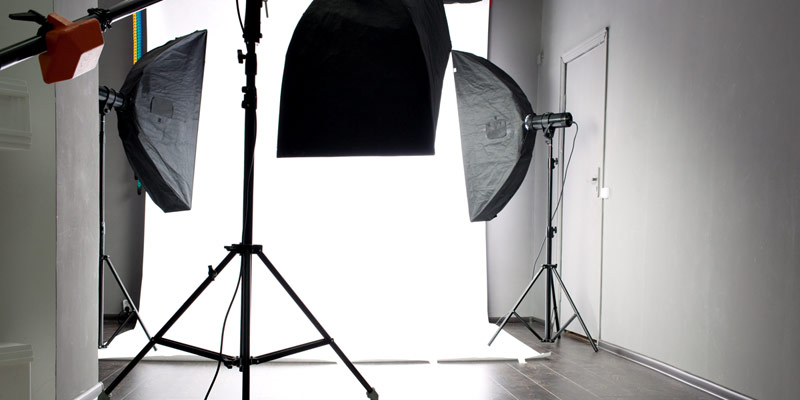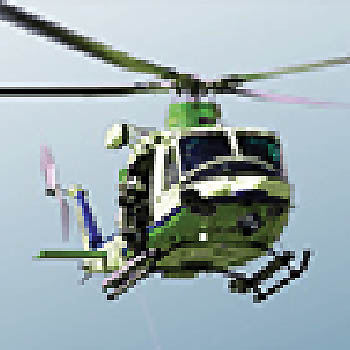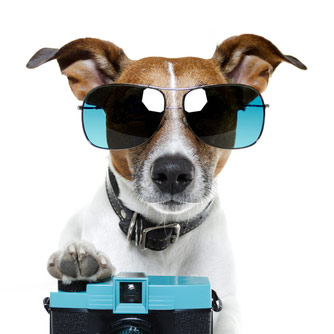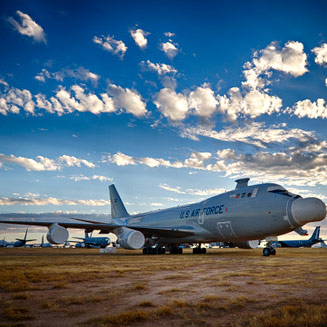Category: Photo & Video
10 insider secrets to getting your aerospace news published
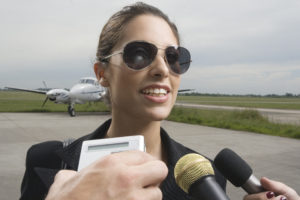 This week we are pleased to bring you a guest blog written by Jeremy Parkin, publisher of HeliHub.com. Jeremy has generously provided us with highly specific, actionable advice about what journalists do and not want from aerospace marketers in their PR outreach efforts, and his guidance is spot on. Read and follow these 10 tips and your media profile will improve — guaranteed.
This week we are pleased to bring you a guest blog written by Jeremy Parkin, publisher of HeliHub.com. Jeremy has generously provided us with highly specific, actionable advice about what journalists do and not want from aerospace marketers in their PR outreach efforts, and his guidance is spot on. Read and follow these 10 tips and your media profile will improve — guaranteed.
Editors are busy people, but you want your news item to get read and used. The more your stories, images and videos can be seen, the more your organisational profile will rise and be recognized compared to your competitors. Journalists could be out of their office, so these tips will help you reach people who may work for extended periods of time off a smart phone or tablet.
A key part of the process is to present the information in the most accessible way, and from my experience launching and building the world’s first helicopter industry news website, I hope these tips will guide you to better success in promoting your news. I also have a significant background in the IT industry, particularly social media, and I hope these insights assist in that arena, too.
- Document formats The text of your press release needs to be easily accessible by an editor. You want them to cut and paste quotes from your key people. We are much less likely to use a PDF press release and will prioritize a Word document. Better still, put the text of your press release in the body of an email like Airbus Helicopters does. Avoid sending press releases as attachments, and don’t send multiple languages of the same text in the same email – our automatic translation software gets very confused when Turbomeca (now Safran) send English and French in the body of the same email message. These rules apply irrespective of whether you send emails direct, or use an email marketing system such as MailChimp.
- Multiple stories If you are sending two stories, send them as separate emails, ideally a week or more apart, and ensure they are distinctly different. A few years back, Bell Helicopter took to issuing a new press release for every single country that approved a higher MTOW for the 429 model, in some cases countries where they needed lots of optimism to even sell an aircraft. That soon became a “Boy Who Cried Wolf” situation and we exercised the [Del] button.
- How many images? Every press release needs an image – the saying, “A picture is worth 1,000 words” still holds true. Some say multiple images mean bigger (and slower) emails which could be quarantined by an email server, so consider supplying images via a link to a public-access folder on Dropbox.com like MD Helicopters do.
- Image File Format As HeliHub.com is entirely online, we prefer JPG. Media outlets that encumber themselves with hard copy issues may prefer PNG but will still be able to handle JPG. Images embedded into a PDF are ignored as too difficult to extract, even if it is technically possible.
- Image Size To present your image at a quality level which can be used, the minimum dimension should be 2000 pixels. With many smartphones capable of taking images or 3-4000 pixels, there is no excuse. Over half the images we receive are 1000 pixels across or less, and we ignore them. Be careful using a wire service. as some of them restrict image size and force the reader to sign up to something to get full-size images — the chances they will sign up are low.
- Presenting the subject in an Image Flying means wings or rotor blades, and these make for landscape images (wider than height). But the editor may have a portrait (taller than width) gap to fill. Leave “editing space” around the subject. At HeliHub.com we post two news-related images to Instagram every weekday, and that usually means square images. We also change our Twitter header image weekly – and that needs an image three times wider than its height.
- Lighting and weather We ignore dreary photos unless the subject is really important. Improve your images using free software such as GIMP. Very recently the image of the third AW609 tiltrotor prototype needed editing time as it looked like it was taken in a rainstorm.
- Corporate image bank Sometimes an editor will prefer to use your corporate logo, and you should have these available on (or from) your website, along with head shots of key people in your organisation. Consider using a free service like OpenBrand.com to host these, like Helipaddy does.
- Video format/location Press release video is still rare, but the click-through to a video online is remarkably high, so the cost may be worth the effort, even if the video is less than 60 seconds long. Minimum format is HD these days, and some in 4K. Only a few aviation organisations are using 360-degree videos, but this will be the way ahead for aircraft interiors or to show details of an equipment installation. Do not save videos on your own website, but instead on YouTube, Vimeo or Wistia so they can then be embedded easily into a story online. The vicarious benefit is the extra views from the search traffic of those sites – remember, YouTube is the world’s second biggest search engine.
- Compressed file formats Do not submit ZIP files; they are too much hassle. People who ZIP a JPG file are demonstrating that they don’t know that JPG format is already a compressed file format.
Interested in more information about working with the aerospace and defense news media? BDN has compiled a complete PR toolkit full of tools and tips to improve your skills and your results. Tons of other free aerospace marketing resources are also available for download. View the entire library here.
How Much Is A Photograph Worth?
 Photography can be either art or commerce. The value of a piece of art is defined simply by what someone is willing to pay for it. That fact explains why a photo of the inside of a 99 Cents Only Store fetched over three million dollars at auction. Then again, there are only three copies of that photo in existence, so exclusivity is part of the value.
Photography can be either art or commerce. The value of a piece of art is defined simply by what someone is willing to pay for it. That fact explains why a photo of the inside of a 99 Cents Only Store fetched over three million dollars at auction. Then again, there are only three copies of that photo in existence, so exclusivity is part of the value.
But for commerce, there is some guidance to be had in the realm of advertising. Specifically, over time and based on many factors including the number of readers of a magazine, the characteristics and qualifications of those readers, and the perhaps intangible reputation of a publication, rates have been negotiated for presenting a message to those readers. To wit, their rate card spells out how much a magazine wants in exchange for advertising space, the “value” of that space. (Keep in mind that when I speak of value, I’m not addressing the cost to create and submit a photo, but the equivalent value of that photo as compared to an ad.)
Typically, the least expensive rate, per square inch, is for a full-page ad. The quantity (number of square inches) is higher, so the rate is lower. Purchasing more editions can further reduce the rate, as can negotiations with the salesperson. Granted.
But to simplify this examination, I will use published full-page single-edition ad pricing as a guide to the value of space in a publication, an approach which is appropriate in these calculations.
Here are some rates for pan-aerospace publications (without naming names): PA-1 charges $11,525 for a full-page ad. PA-2 charges $13,800. PA-3’s rate is $15,985 and PA-4 goes for $21,265. Those are some heavy-hitting publications and they charge accordingly.
On a smaller scale, in the niche of rotary-wing publications, here are just a few: RW-1 lists a full-page ad at $5,690. RW-2 asks for $6,045. RW-3 lists at $7,186, while RW-4’s rate is $11,990.
How do these numbers relate to the value of photography? One simple correlation is to assign the value of a cover photo, which takes up a full page, the same value as a full-page ad. Thus, cover photos in the pan-aerospace publications might reasonably be worth between $12,000 and $21,000, and among the helicopter magazines listed, to be worth between $5,700 and $12,000.
But here’s a slight curve to these calculations: advertising positions that are considered “premium,” meaning they are located within the magazine such as to be more likely to be viewed and viewed repeatedly, often command a premium price from the publisher, usually between 10 and 20 percent, but as high as 33 percent in some publications. Those locations are, typically, the inside front cover and the inside and outside back covers. So what premium should apply to get the outside front cover? The location that every reader (and passerby) sees, the cover that is advertised and touted by the publication? There is at least one publication, not included above, that sells its outside front cover and their listed rate is nearly 40 percent higher than a full-page ad inside the magazine. So it seems very reasonable to apply a 20-percent premium to those full-page ad rates, yielding a value range of $14,400 to $25,200 for the pan-aerospace publications, and $6,840 to $14,400 for the helicopter ones. (Or apply a 33-percent premium to obtain a range of between $16,000 and $28,000, or between $7,600 and $16,000.)
What does it take to appear on the cover of a magazine? First and foremost, it requires a great photo. The cover image is normally a lead-in to a major story, but sometimes a publication will run a great photo with no more than a caption on the Contents page. You see, the cover is the major marketing piece for the publication, and they demand (or should demand) high quality images that draw a reader’s eye. If you have a compelling story and a great photo, so much the better and then you gain the further value of the space devoted to your story — and more photos — inside the magazine. But if nothing else, if you can provide a great photo that works with the publisher’s own interests, there’s good value to be had.
That’s a lot of value.
So, we’ve established what a photo can be worth. What should a great photo cost? Free sounds good, right!? All benefit and no expense?
Like other marketing efforts, however, great photography requires planning and effort and coordination. How we’ve come to expect photography to be free is a discussion all its own, but as an agency with plenty of experience in searching for the elusive, great, “free” photo, and as much experience in creating great photos, we can confidently state that great photography is anything but free. And the most efficient and effective way of offering a great photo for the cover of a magazine is to have it shot on purpose.
And here’s an (obvious) bonus to having great photography shot purposefully for you: more than that one great image will come of the effort, and you’ll have additional resources to use at trade shows, in press releases, in collateral and advertising. Useful in your company newsletter or annual report, and good still images can contribute to other important marketing media: your web site and videos.
The old saw is, a picture is worth a thousand words. It can also be worth many thousands of dollars and will pay dividends for years to come.
Photography Tips For Aviation Photographers
 Photographing helicopters air-to-air with sharp details while also having the rotor blades suitably blurred is a challenge for any photographer. The aircraft holding you (the photographer) is often cramped, bumpy, and vibrating, while the aircraft you are trying to capture is also moving, sometimes because of turbulence, sometimes because of mismatches in speed or altitude or pilot comfort levels. Here are some quick tips for capturing great shots in these challenging conditions. Since you have to use a shutter speed that allows the blades to blur (if they aren’t blurred, the aircraft will look like it’s about to fall out of the sky), your main challenge is to keep the camera steady during each exposure.
Photographing helicopters air-to-air with sharp details while also having the rotor blades suitably blurred is a challenge for any photographer. The aircraft holding you (the photographer) is often cramped, bumpy, and vibrating, while the aircraft you are trying to capture is also moving, sometimes because of turbulence, sometimes because of mismatches in speed or altitude or pilot comfort levels. Here are some quick tips for capturing great shots in these challenging conditions. Since you have to use a shutter speed that allows the blades to blur (if they aren’t blurred, the aircraft will look like it’s about to fall out of the sky), your main challenge is to keep the camera steady during each exposure.
When you’re shooting on the ground, you might lean against a lamp post or building when your shutter speeds need to be slow. In an aircraft, you don’t want to lean against the door frame or seat or anything, really, because those structures are being vibrated by the engine and rotors and air flow around the aircraft. So touch the aircraft as little as possible — let your body absorb as much of the vibration and jiggles as possible. And speaking of air flow, unless your airspeed is extremely low (which is possible in a helo), keep your lens out of the slipstream just outside the door or window. Even if you can’t see the vibration through your viewfinder, your lens was not designed to slip cleanly through the air, so it will not be at rest if it’s out there. This applies to lens hoods, too. Keep them out of the wind, or take them off (and stow them securely).
Next, if you have stabilization features in your camera or lens, try using them; they should help. But review some shots carefully to be sure the features aren’t making things worse. Sometimes the systems will be trying to move the sensor or lens elements or whatever, during the time the shutter is open, and the result is more blurring. A gyroscopic stabilizer can be a big help, not only by functioning as intended — countering unwanted motion in the camera with opposing motion induced by the gyro — but merely by being heavy they tend to dampen smaller motions caused by vibrations. These systems add weight and complexity, with batteries and cables, and that extra weight can be awkward and compounded by G-forces during maneuvers, but they can seriously increase your percentage of good shots. Finally, shoot a lot — digits are cheap, while aircraft operations are not — and check your results closely when you have a lull in the action, such as when the subject aircraft is maneuvering away from you. Zoom in on the display on the back of the camera to make sure your settings and technique are achieving the desired effects. And if you are not getting sharp details in the subject aircraft with suitably blurred blades, improve your technique or go ahead and increase your shutter speed. Coming back with usable, if not ideal, imagery is better than coming back with nothing but blurry ones. Oh, and fly safe. Listen to your pilots, ask them for what you’d like, but accept what they’re willing to do. No image is worth injury or death.
Get On Board: Introduction To Whiteboard Videos
 I’m suddenly obsessed with white board videos as a great way to tell technical stories in a quick, concise and eminently watchable way. We’ve all seen too many traditional, snooze-worthy corporate videos. They are a big investment, but if they are not masterfully produced they do little but bore the audience and clearly convey that your company is boring, too. They are not being used much in aerospace marketing yet, though our friends at Able Engineering were among the first, and we love the end result.
I’m suddenly obsessed with white board videos as a great way to tell technical stories in a quick, concise and eminently watchable way. We’ve all seen too many traditional, snooze-worthy corporate videos. They are a big investment, but if they are not masterfully produced they do little but bore the audience and clearly convey that your company is boring, too. They are not being used much in aerospace marketing yet, though our friends at Able Engineering were among the first, and we love the end result.
Some people might worry that a white board concept is too edgy or cartoony for our industry, but it’s not. Heck, the United States of America has branded a “White House White Board” online to explain potentially daunting topical issues (note to President Obama: lose the talking heads).
If you have not yet seen or experienced a white board video, start with a Google search and start exploring. They’re all the rage, and, well, we’re on board.
Technical Tip: Photography Resolution
 Resolution matters.
Resolution matters.
We dislike having to tell clients that the photos they have sent us are not large enough to work for the intended use. Here’s a very basic guide that may help.
For typical press releases, a photo/file of 5” x 7” @ 300ppi is sufficient.
Photos for printing with stories in magazines, for creation of advertisements, or for brochures should be 300ppi at the size they will be used, or larger. Photography for trade show graphic panels should be as large as you can get them – and usually that’s not really enough resolution to adequately support the finished size. If you can manage 100ppi at the size used on the panel, that’s just right.
Files may be RGB .jpg files if saved at the highest quality setting. Your printer will want CMYK, but those don’t compress well and the file size is larger for the same image.
Photos downloaded from the web after a Google search are generally not of high enough quality to be used for anything more than a placeholder, and are usually copyrighted and cannot be used commercially without permission.
A Warning to Aerospace Marketing Professionals About Copyright Infringement
![CopyrightStamp_45323893 [Converted].eps](http://66.147.244.184/~bdnaeros/wp-content/uploads/2014/02/copyrightstamp_350-300x262.jpg) Does the end justify the means? Too often, in the world of aerospace marketing, the answer is yes. And that’s not a good thing.
Does the end justify the means? Too often, in the world of aerospace marketing, the answer is yes. And that’s not a good thing.
In their zeal to be noticed and remembered, some marketing people are willing to bend the rules, and, worse, break the law, in regard to intellectual property.
Sometimes it’s ignorance. Not everyone has a marketing background. Some came from the military. Others are engineers.
Case in point. Military marketers at a major OEM wanted to use the song “Bad Moon Rising” in a product video. They just didn’t want to pay for it. So they got permission to use the song once, then proceeded to break all the terms of the agreement, making copies, showing it to groups, and violating copyright laws left and right.
Photo usage is even more problematic, as there is a stubborn resistance to pay for photography and sometimes outright refusal to respect the usage rights for same.
Copyright infringement is a crime that impacts the livelihood of designers, authors, composers, songwriters, and filmmakers. Frankly, it’s theft. And we’re better than this.
Aerospace is a special industry full of good professional people who have integrity and most of us genuinely want to do the right thing. Here’s a reliable resource for more information: copyright.gov
Why Paying for Photography Rights Matters
 Photographers are weird.
Photographers are weird.
I mean, they want to get paid for their work. What’s up with that? They’re a nervy bunch, all high and mighty about their talent and their rights and whatnot. Geez.
OK, seriously. For some reason, a lot of aerospace marketing people don’t think they should have to compensate photographers for their work — and that’s just wrong. In our business, it’s a big red warning flag when people brag that they never pay for the photography they use for marketing purposes.
Professional photographers have the knowledge and the skill to make you, your company and your products look your best. From our standpoint, the right photo can make or break a project. Professional photographers are in business, and as a business, need to make a profit.
I just don’t understand those who think otherwise, do you?
Creating 1 image from 7: A Photography How-To
 Because the Boeing 747 that housed the airborne laser (ABL) had a beautiful sunset to back it up, a special technique was used to retain fine detail throughout the shot. The difference in light levels between the clouds and shaded aircraft is too great for a camera to capture, or a computer screen to show, but there is a solution.
Because the Boeing 747 that housed the airborne laser (ABL) had a beautiful sunset to back it up, a special technique was used to retain fine detail throughout the shot. The difference in light levels between the clouds and shaded aircraft is too great for a camera to capture, or a computer screen to show, but there is a solution.
I mounted the camera on a stable tripod and captured seven images of the aircraft without moving. The seven images differed only in the length of time that light was allowed onto the camera sensor.
One image was as the camera’s metering system tried to produce a “normal” photo. However, because those light levels were so disparate, only a poor compromise was possible. Some parts of the image might have been alright, but the brightest and darkest areas were unusable. The brightest parts were pure white, without detail or color, and the darkest areas were pure black.
One of the seven images would have let in much, much more light. The result? The bright areas were even more white and featureless, the entire sky and much of the airplane was were almost completely blank. But the darkest areas would show actual detail and color. Another image would let in a bit less light than that, so the darkest areas were a bit darker, but the lightest areas were starting to reappear. And a third image let in a bit less light, but still a bit more than the “normal” photo.
Conversely, one image let in much, much less light, so that the dark areas were larger, with more of the image plunged into blackness. However, the clouds and sky had rich color and plenty of detail. Another image let in a bit more light, and the last image let in a bit more. The filmstrip illustrates the seven images in the order I’ve described.
The result was seven exposures that, in one or another, have color and detail in every part of the scene. But how do you make one from seven?
For this photo, I prepared the original camera files using DxO Optics Pro to “process” the files, allowing me to work with images that have consistent noise reduction, sharpening, and color correction. Then I combined the seven processed images using a Photoshop plug-in called HDR Efex Pro 2 from Nik Software and made adjustments to brightness, colors and other parameters to arrive at the final photo.
The point of all that was to compress the range of light levels in a way that appears natural and attractive. I know I succeeded because the Business Affairs Office was thrilled with it, and the image was also chosen to run in the base newspaper.
This technique worked for me — you may want to change things up. My exposures differed by a single f-stop. I could have made the differences greater or smaller. I could have processed the camera files differently, using different software and techniques. Other software can be used for combining the seven images. And for that matter, more or fewer images could be captured to create the final.
What was important was the vision to see an opportunity and doing the work to make it a reality.

Finders, Keepers?
Just because you found that photo on the Internet doesn’t mean you can use it for free. Check out this link where John Mueller summarizes the total cost to recreate a sunset image.
http://www.petapixel.com/2012/01/10/this-photograph-is-not-free/
So, next time you’re looking online for an image to use, you might want to consider asking for permission, or looking at a stock photography site. Might be worth the extra effort.

